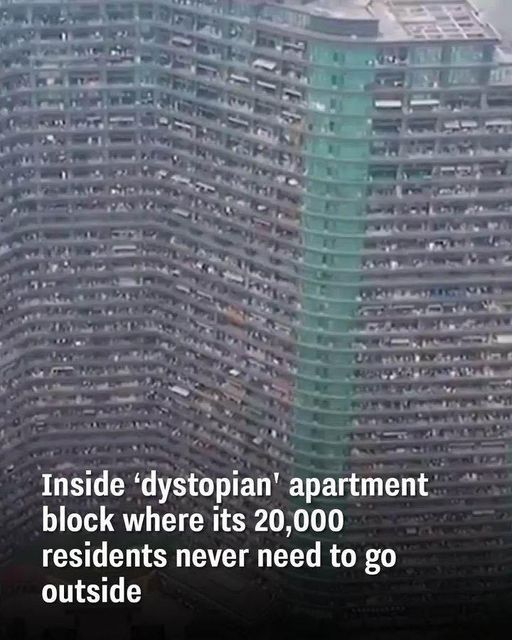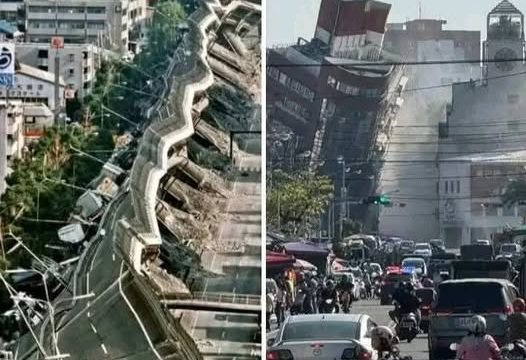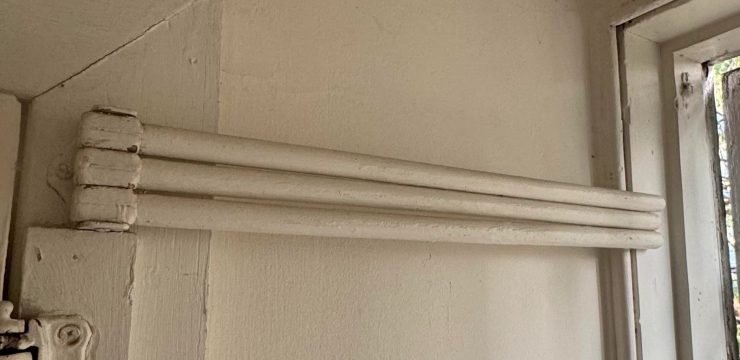In the heart of Hangzhou, China, a building unlike any other is turning heads and sparking conversations across the globe, especially on social media platforms like TikTok. Known as Regent International, but dubbed the “Dystopian Apartment” by its online followers, this massive structure has captured public fascination with its sheer size, futuristic design, and bold approach to urban living.

Designed by Alicia Loo, who is also known for her work on Singapore’s Marina Bay Sands, this S-shaped skyscraper rises 675 feet into the sky and currently houses around 20,000 residents, with a maximum capacity of up to 30,000. Its impressive scale is just one part of the story—what really sets Regent International apart is the way it redefines the concept of city life by placing nearly every essential amenity under one roof. Spanning as many as 39 floors on its tallest side, the building is a self-contained community offering everything from restaurants, grocery stores, swimming pools, salons, and internet cafés to convenience stores and fitness centers. For many young professionals, students, and content creators, this all-in-one lifestyle is incredibly appealing, especially in a fast-growing city like Hangzhou where housing is expensive and space is limited.
Rent in Regent International is relatively affordable, starting at around $200 per month for a small unit and going up to about $600 for larger spaces, making it an attractive option for those looking to live, work, and play in one place without breaking the bank. However, despite its popularity and trendiness online, not everyone is convinced that this model of high-density living is ideal. Critics argue that packing tens of thousands of people into a single building can lead to a lack of personal space, limited outdoor access, and a sense of isolation despite the close quarters.
Some even say the building resembles something out of a sci-fi dystopia, where human connection takes a backseat to convenience and efficiency. The term “dystopian” might be an exaggeration, but it reflects real concerns about what happens when urban planning prioritizes functionality over livability. Privacy can be hard to come by, and with so many people living so closely together, residents may find themselves craving a connection to the outside world that the building doesn’t quite offer. On the other hand, there are those who view Regent International as a forward-thinking solution to one of today’s most pressing global challenges—how to accommodate growing populations in cities without relying on endless urban sprawl that eats up natural landscapes and worsens commute times. With cities around the world facing housing shortages, rising costs, and limited land, the idea of vertical communities packed with services and amenities might just be the future of urban living. The concept is not entirely new, either.
In Whittier, Alaska, a small town’s entire population resides in a single building, which serves as a kind of prototype for self-contained community life. What makes Regent International unique is the scale and ambition behind it—it attempts to merge modern design, affordable housing, and convenient living into one massive structure. Whether you view it as a revolutionary housing model or a glimpse into a potentially isolating future, there’s no denying the building is pushing boundaries and forcing people to rethink what it means to live in a city. As housing continues to be one of the biggest issues in urban planning, especially with younger generations struggling to afford traditional homes, structures like Regent International may become more common. Still, the conversation around this building raises important questions: Can a community thrive without outdoor spaces? Is convenience enough to replace a traditional neighborhood? And what trade-offs are we willing to accept in exchange for affordable, centralized living? One thing is certain—Regent International has become more than just a viral sensation; it’s a symbol of the direction urban housing could take in the coming decades. Whether it represents a bold step forward or a cautionary tale depends on how society values space, community, and the very idea of home.





